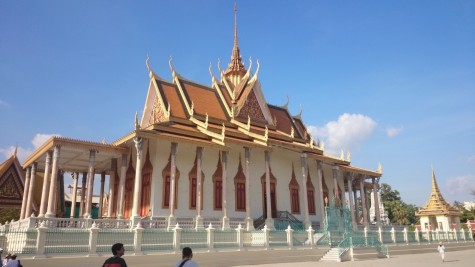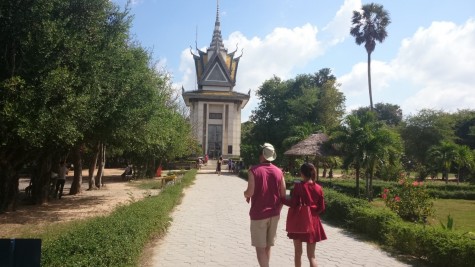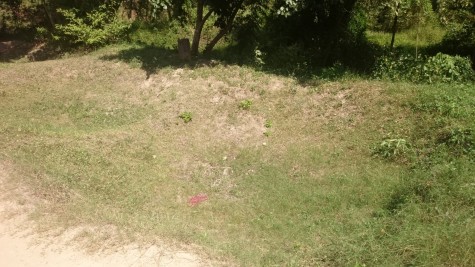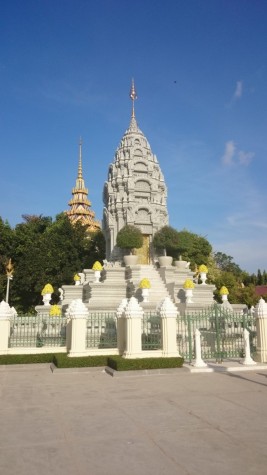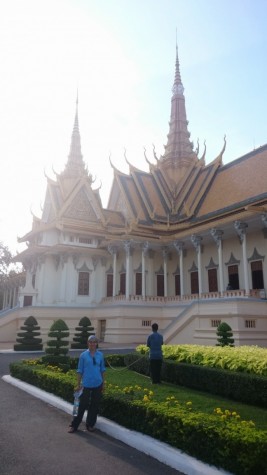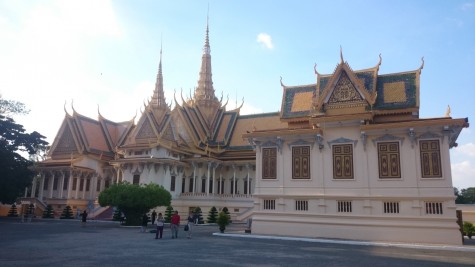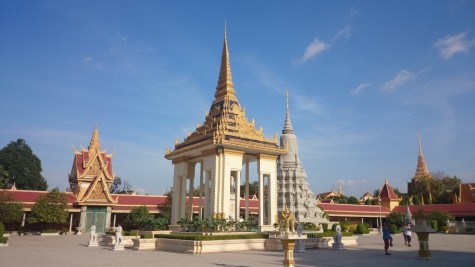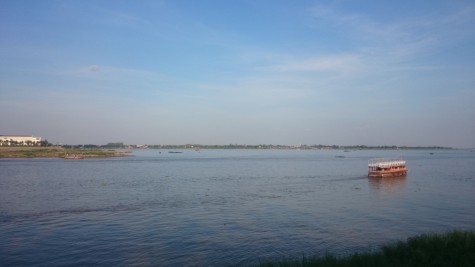While the S21 prison was where captives were tortured, they technically were not supposed to be killed there (though many were). Instead, prisoners were supposed to have their confessions extracted at S21 but be moved outside the city to be killed. Khmer Rouge soldiers, in order to save bullets, would commit murder by bludgeoning prisoners with farm implements or by slitting prisoners’ throats. The bodies would be piled up in mass graves. These areas would later come to be called “The Killing Fields.”
Like the S21 prison, The Killing Fields are now a memorial. For context, there are several hundred “killing sites” scattered about the country, and many of them are fields. The term “Killing Fields,” when used to refer to one site, usually refers to the site outside Phnom Penh that is now a memorial. The day after visiting S21, Cindy and I visited the Killing Fields.
The area itself is quite pretty. It’s peaceful, green, with flowers and butterflies. A Buddhist stupa acts as a gravestone for the victims and displays skulls and bones, organized by the age of the victims. The rest of the memorial is the fields themselves. What used to be mass graves are now sunken depressions in the ground. Visitors are led around the depressions on dirt paths. Once in awhile, pieces of clothing, bones, and teeth can be seen jutting up from the ground (most of the area is not excavated). Visitors are asked not to disturb the artifacts; staff consolidate them every few months.
Most difficult to stomach was the Killing Tree. The Khmer Rouge slaughtered entire families to ensure that later generations would not seek retaliation for the murder of their parents and grandparents. Some of the victims were babies. In order to dispatch such victims, the Khmer Rouge grabbed the babies by their ankles and swung them against a tree. This tree, known as the Killing Tree, is now lined with prayers. Next to the tree is a mass grave with the remains of hundreds of mothers and children.
Having encountered enough sadness, Cindy and I visited a cheerier place in the afternoon, the Khmer Royal Palace (above). Cambodia is one of the few remaining monarchies in the world. The king lives in the Royal Palace in Phnom Penh. Most of the grounds and the buildings are off limits to tourists, but a few are open for visiting.
We stayed at an Airbnb in Phnom Penh. Our host, Kay, was an Aussie NGO worker who had been living in Phnom Penh for three years. We met up with her for a drink in the evening at a bar overlooking the Mekong to wrap up our day.

 Español
Español